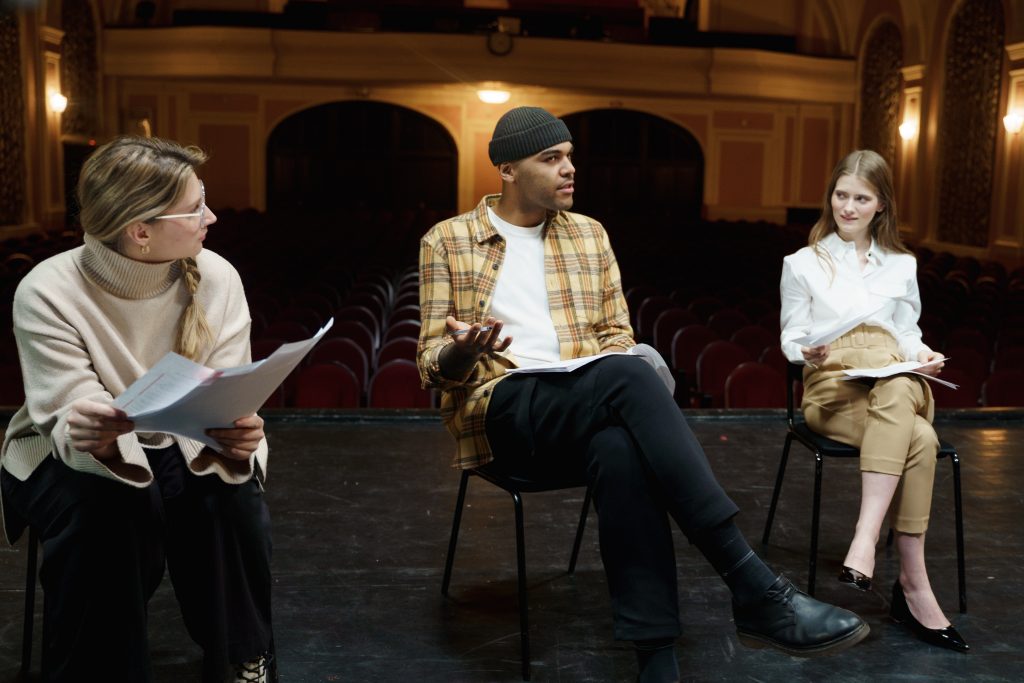How Much Diversity Exists in Shakespearean Theaters?
“Nothing can come of nothing. Speak again.”
King Lear, Act I, Scene I

The accessibility of Shakespeare is a topic that scholars discuss over and over. High school English teachers drilled into our brains the universal themes that the Bard covers in his plays, which should make the tales of Romeo and Juliet and Hamlet relatable to everyone, right? Perhaps. But a large part of the population may find Shakespeare’s words far less relatable.
What is the History of Shakespeare’s Casts?
The diversity of actors onstage has improved enormously since the 16th century. During this time, Shakespearean casts were made up of only young boys and men; women didn’t appear on the stage until 1660. As for the diversity of the casts, well…it’s safe to say that Shakespeare’s favorite actors–Richard Burbage, Edward Alleyn, Robert Armin, William Kemp, and Nathan Field–were all white. There were some specific roles designated for POC, such as Othello and Aaron the Moor. However, these roles predominantly played into stereotypical portrayals of POC. Furthermore, up until Ira Aldridge played Othello in 1824, no POC had been cast in any of the Bard’s roles. So many of Shakespeare’s most famous works–such as Romeo and Juliet, Macbeth, and King Lear–have long been performed with predominantly white casts. Current theatrical artists are working to dismantle outdated ideas about casting; let’s explore the “Measure for Measures” they are taking.
How Carl Cofield’s King Lear Brings a Different Perspective
Despite the progress we’ve made since the 16th century, it is worthwhile to examine the current creative leadership in prominent Shakespeare Theaters to see how much they have improved. The artistic directors make the creative decisions behind each production; they are responsible for taking Shakespeare’s words and turning them into a vision that embraces people of all backgrounds. In a recent production of King Lear, director Carl Cofield brought an all BIPOC cast to the St. Louis Shakespeare Festival, which featured Hadestown star André De Shields. Speaking with St. Louis Magazine, De Shields emphasized how a BIPOC cast brings a different perspective:
It’s Black pain that is the formula I am using to get through this particular wilderness that we call King Lear. You want to understand America? You have to put on Black eyes.
How Do Prominent Shakespeare Theaters Compare in Their Leadership’s Diversity?
Hopefully we will see a rise in productions like Cofield’s King Lear. Cofield is the Associate Artistic Director of the Classical Theatre of Harlem; therefore we should see continued color-conscious casting. The board of directors of the Classical Theatre of Harlem is 70% BIPOC, a much higher percentage than other renowned theaters. While Shakespeare Theatre Company (STC) in Washington D.C. dedicates a page of its website to how it is improving on its equity and inclusion, its artistic staff is only made up of 30% BIPOC. STC’s inclusion practices are highly promising, but moving forward it would be nice to see their leadership better reflect these practices.

How Diverse is Stratford Shakespeare Festival?
Similar to STC, Stratford Shakespeare Festival in Ontario, Canada includes a large segment on their website that focuses on how as a company they can improve on the diversity of their leadership in all aspects; not just on the board of directors, but also in casting and all design elements that go into the show. Their statement also addresses mental health and the services that will be provided to their staff and employees.
The current percentage of BIPOC in the Director’s Office is only 26.3%; however, their diversity and inclusion mission statement references that their leadership is in the process of changing over to better reflect the diverse voices of the population. A writer for the Stratford Beacon Herald spoke with Antoni Cimolino (artistic director of the Festival) who announced the addition of BIPOC voices to leadership positions in order to “take in new and different ways of working.” One such leadership hire is the addition of Marcel Stewart, who joins casting director Beth Russell to cast all programming with the “emphasis on raising the voices of BIPOC and other equity-seeking groups.”
How Diverse is the Royal Shakespeare Company?
After critical inspection of the board of the Royal Shakespeare Company (RSC) located in Stratford-upon-Avon, United Kingdom, the findings were close to the same as the other theaters: the leadership comprises 31.3% BIPOC. This data does indicate a slight increase; however, it’s evident that BIPOC voices in leadership roles—in the scope of Shakespearean Theaters—remain underrepresented.

Will Shakespearean Theaters Deliver on Their Promise?
The broadening of perspectives in the theatre community is a long-awaited movement. Recent increased awareness of the violent and systemic discrimination that marginalized groups face has made it impossible to ignore a key fact: not being racist is not enough. Being actively anti-racist includes dismantling the system that has long repressed BIPOC voices. Bringing these voices into leadership roles where change can happen is an important first step. Some of the biggest names in the Shakespeare theater game have begun this significant transition, and are key companies to monitor in the coming months and years with the hope that they deliver on their promise: to implement lasting change by appointing more BIPOC to positions of power.




